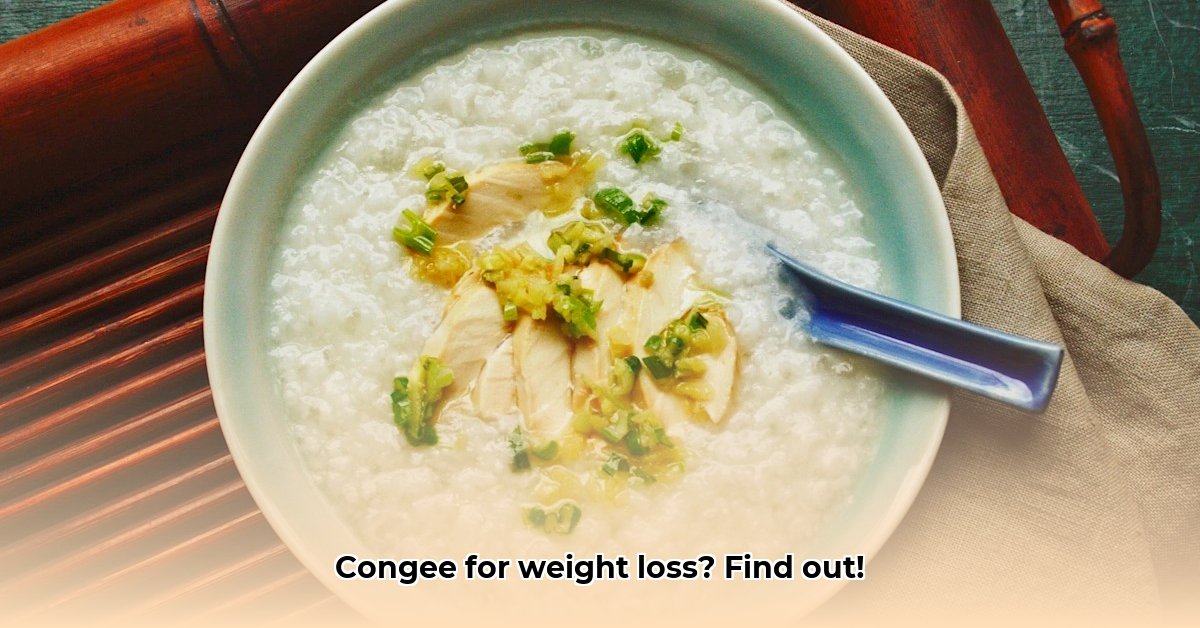
Congee, a comforting rice porridge enjoyed across numerous cultures, is increasingly touted as a weight-loss aid. But does this creamy bowl of goodness truly contribute to shedding those extra pounds? This comprehensive review delves into the science, exploring both the potential benefits and drawbacks of incorporating congee into a weight-loss strategy. We'll provide practical guidance to help you determine if congee is a suitable addition to your healthy eating plan.
What is Congee?
Congee is a rice porridge, a staple in many Asian cuisines. It's made by simmering rice in a significant amount of water until it achieves a creamy, easily digestible consistency. While traditionally made with white rice, brown rice variations offer enhanced nutritional benefits. Recipes vary widely, with savory versions incorporating meats, vegetables, and herbs, while sweet congees feature fruits and spices. The versatility of congee allows for customization, but this very characteristic is key to understanding its impact on weight loss.
Congee's Nutritional Profile: A Variable Landscape
The nutritional makeup of congee hinges heavily on the type of rice used and added ingredients. Brown rice congee, rich in fiber, offers a more substantial nutritional profile compared to its white rice counterpart. Fiber, as we know, promotes satiety (feeling full), potentially curbing overall calorie intake—a crucial factor in weight management. However, adding high-calorie ingredients such as fatty meats or sugary sauces can quickly negate these benefits. A well-balanced congee incorporates lean protein sources, ample vegetables, and minimizes added sugars and salts.
Congee and Weight Loss: Unpacking the Evidence
The question of congee's effectiveness in weight loss remains nuanced. While some research suggests that the high fiber content of brown rice congee can promote satiety and potentially aid in weight management due to its lower calorie density (when prepared simply), more extensive studies are needed to solidify these claims. The glycemic index (GI) – a measure of how quickly a food raises blood sugar – plays a crucial role. White rice congee, with its higher GI, may lead to blood sugar spikes, potentially hindering weight loss efforts. Brown rice congee, with its lower GI, presents a more favorable option.
Potential Benefits of Congee for Weight Loss
High Satiety: The high water and fiber content (in brown rice versions) contributes to a feeling of fullness, reducing overall food consumption. This is supported by several studies on the satiating effects of high-fiber foods.
Low Calorie Density (when prepared simply): A basic brown rice congee with vegetables can be remarkably low in calories, making it a filling yet calorie-conscious meal choice.
Digestibility: Congee's easily digestible nature makes it suitable for individuals with digestive sensitivities. This is especially relevant for those aiming to adopt a healthier diet for weight management.
Potential Drawbacks of Congee for Weight Loss
Added Sugars and Sodium: Many pre-made or restaurant-style congees contain significant amounts of added sugar and sodium, substantially increasing their calorie and sodium content, potentially counteracting any weight-loss benefits.
Type of Rice: White rice congee's higher glycemic index may lead to blood sugar fluctuations, potentially increasing appetite and hindering weight loss.
Portion Control: Even healthy foods can contribute to weight gain if consumed in excess. Mindful portion control is essential when incorporating congee into a weight-loss plan.
How to Incorporate Congee into a Weight-Loss Plan
Successfully integrating congee into a weight-loss diet requires careful planning and execution. Here's a step-by-step guide:
Choose Brown Rice: Opt for brown rice over white rice to maximize fiber content and minimize glycemic impact.
Master Portion Control: Be mindful of your serving size. Start with a smaller portion and assess your fullness levels before adding more.
Prioritize Lean Protein and Vegetables: Boost the nutritional value and satiety of your congee by adding lean proteins (chicken, fish, tofu) and a variety of vegetables.
Minimize Added Sugar and Salt: Season your congee with herbs and spices instead of relying on sugary sauces or salty broths. Avoid pre-made congees, which may be high in added sugars and sodium.
Make it Part of a Balanced Diet: Integrate congee as one component of a balanced diet that includes regular exercise and a variety of nutrient-rich foods.
Conclusion: Congee – A Helpful Tool, Not a Miracle Cure
Congee, when prepared mindfully, can be a valuable tool in a comprehensive weight-loss strategy. Its high satiety and potential for low calorie density (with brown rice and lean ingredients) make it a suitable option for those seeking weight management. However, it's crucial to remember that congee is not a magic bullet. Success hinges on responsible portion control, ingredient selection, and integration within a balanced lifestyle that prioritizes regular exercise and a healthy overall diet. Ongoing research into congee and its impact on weight loss will further refine our understanding.